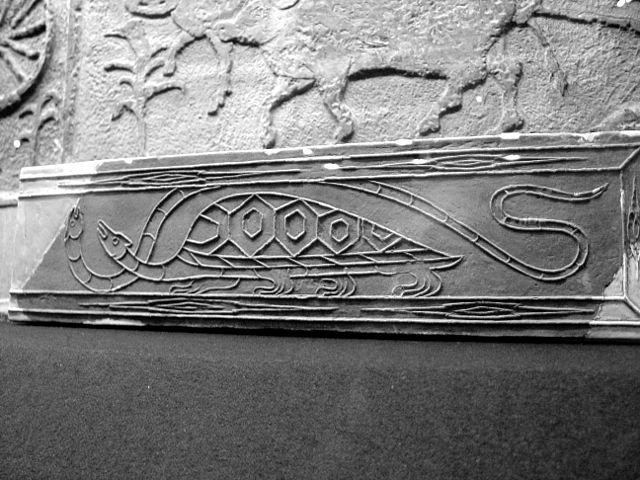
Dark Warrior (Xuan Wu)
Western Han Dynasty, Yangling Museum, Xi'an

|
Dark Warrior (Xuan Wu)Western Han Dynasty, Yangling Museum, Xi'an |
Xuan Wu, a pairing of snake and tortoise, is the Daoist guardian of the North. North is the direction of death in Chinese cosmology; to counter this, the Dark Warrior combines symbols of longevity and immortality: the tortoise is a long-lived creature, and the snake periodically renews itself by shedding its skin. Also called the Black Tortoise, Xuan Wu became transformed later on into an anthropomorphic warrior-god.
Yangling is the burial complex of Han Jingdi, one of nine Western Han emperors buried northwest of Xi'an, between the modern city and the airport. Jingdi's burial precinct consisted of his own mounded tomb; the nearby, separate-but-almost-equal mound of his empress; satellite burials of important officials; and a "mausoleum town" to the east that provided five thousand households1, and their taxes, as required to maintain the site. Jingdi's tomb was oriented to the east; facing the tomb were buried 40,000 pottery attendants2 in orderly rows and columns of men, women, and horsemen. The Han tombs were visited as a tourist attraction, even in ancient times.
1Liu Xujie, in Steinhardt, Chinese Architecture, p. 52.
2Paludan, Chronicle of the Chinese Emperors, p. 34.

|

|